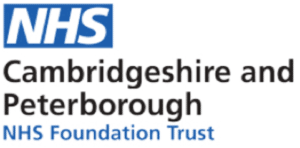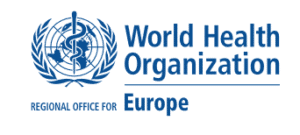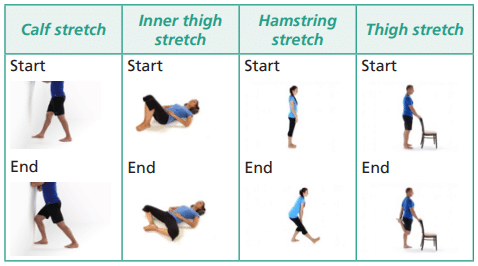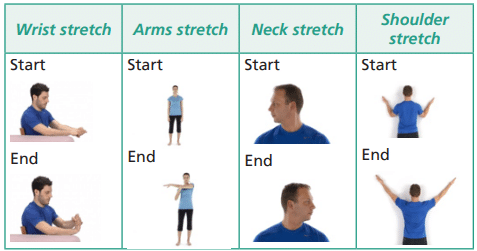Breathlessness and Long COVID
What is breathlessness?
Breathlessness is a very common symptom in people with long COVID. Your lungs can become inflamed with your initial infection and the effort of breathing can increase.
You may be breathing more quickly and shallower than normal, however, it is important to try and stay calm.
As your lungs recover and time passes into the 12 week mark following infection, there can be other reasons for your breathlessness to continue. These can be due to being deconditioned and anxiety.
Anxiety can also increase your heart rate and make your breathing rate increase further. We encourage breathing control to help manage your breathlessness. Practice at rest to begin with then use during activity.
Remember, it’s normal to become more breathless when exerting yourself, such as walking up a flight of stairs, but it should recover to a level whereby you’re not thinking about your breathing within a few minutes of rest.
Your breathlessness should improve as you gradually recover or increase your activities, but in the meantime, the positions and techniques below can also help to manage it.
What is cough?
You may be experiencing a persistent dry cough. Coughing is one of the most common symptoms of COVID-19 and Long-COVID, and whilst it is typically in the form of a dry cough, coughs with phlegm can also be caused.
Coughs can be irritating, exhausting and can lead to inflammation in your upper airways. The more you cough, the more irritated your upper airways become, and the more you feel the need to cough.
Breathing control
Try this method for controlling breathlessness by following the below steps:
First try at rest, then try doing it during activities.
- Get in a comfortable position
- Only if it helps you to relax, close your eyes (otherwise leave them open) and focus on your breathing.
- Breathe in and out through your nose (or mouth if you are unable to do this – but work towards trying to breathe through your nose in time).
- Put one hand on your stomach and one hand on your chest, and recognise how it rises and falls when you breathe in and out. #
- As you breathe, you’ll feel the hand on your stomach rise more than the hand on your chest.
- Try to breathe in for the count of one, PAUSE and then out for the count of two, working towards a longer breath out than in. This will slow your breathing rate down.
- Notice areas of tension in your body and try to release this with each breath out.
- Gradually try to make your breaths slower, smoother and deeper.

This is useful to practise when carrying out activities that might take more effort or make you breathless, like climbing the stairs or walking up a hill. It’s important to remember that there is no need to rush, and you can take rests.
- Think about breaking the activity down into smaller parts to make it easier to carry out without getting so tired or breathless at the end.
- Breathe in before you make the effort of the activity, such as before you climb up a step.
- Breathe out while making the effort, such as climbing up a step.
- You may find it helpful to breathe in through your nose and out through your mouth.

Relaxed tummy breathing
- Make sure you are in a comfortable position with your head and back supported and your shoulders and upper chest relaxed.
- Place one hand on your tummy – feel your tummy rise and expand as you breathe in and relax back down as you breath out.
- Rest and wait for your next breath to come.
- Breathe gently when practicing; there should only be a slight movement of your tummy at rest.
Techniques for managing breathlessness
This section will show you some positions of ease to help you in times of breathlessness.
Lying on your side propped up by pillows, supporting your head and neck, with your knees slightly bent.
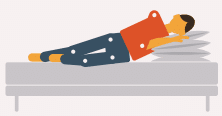
Lying flat on your stomach, or prone, can help breathlessness. It’s not comfortable for everyone, but is a position to consider.

Sit at a table, lean forward from the waist with your head and neck resting on the pillow and your arms resting on the table. You can also try this without the pillows and rest your head on your hands.
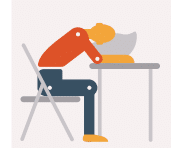
Sit on a chair, lean forward to rest your arms on your lap or the armrests of the chair.

While standing, lean forward onto a windowsill or other stable surface.
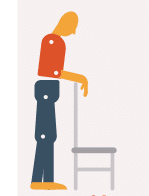
Lean with your back against a wall and your hands by your side. Have your feet about 30 cm away from the wall and slightly apart.
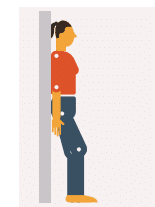
Suppressing the urge to cough
This section will give you tips and exercises to help you with coughing and coughing fits.
- Breathing in and out of your nose instead of your mouth.
- Sucking on boiled sweets or lollipops.
- Having regular drinks breaks / sips of fluids.
As soon as you feel the urge to cough, close your mouth and cover it with your hand (SMOTHER the cough). At the same time, make yourself SWALLOW. STOP breathing – take a pause. When you start to breathe again, breathe in and out through your nose SOFTLY.
“Smother – Swallow – Stop – Soft” is a good way to remember this exercise.
If you need to cough, try to cough into a tissue or the crease of your elbow and over 2 metres away from other people. Always wash your hands for 20 seconds after you cough.
If you cough at night, try lying in a different position and / or use pillows to prop yourself up.
Types of cough
Coughing is one of the most common symptoms of COVID-19 and Long-COVID, and whilst it is typically in the form of a dry cough, coughs with phlegm can also be caused.
A dry cough is one of the most common coronavirus symptoms and can continue into Long-COVID for many individuals.
If you have a dry cough, try to:
-
Stay hydrated. Take small sips of a soft drink, one after the other. Try not to take large sips..
-
Inhale steam. Pour hot water into a bowl, then put your head over the bowl. If comfortable, cover your head and bowl with a towel.
-
Drink a warm drink, such as honey and lemon, as this can soothe your throat.
-
Swallow repeatedly if you don’t have a drink near you. This can work in a similar way to sipping water
It is normal to produce mucus (phlegm) as it helps to keep your lungs and airways clear and clean.
Mucus (phlegm) is a slimy and slippery liquid that traps bacteria in your nose and throat which stops infection from spreading.
You may find you produce a lot of mucus (phlegm) following an admission to hospital for COVID. After a chest infection your breathing may be noisier than normal, and you may be short of breath.
Part 1 – Breathe slowly through your mouth
- To start the exercise, sit upright and make sure you are comfortable
- Take a slow, deep breath in through your nose
- Hold your breath for a count of 3
- Breathe out gently and slowly through your mouth
Repeat this 3 or 4 times.
Part 2 – Breathe gently
Do some gentle, relaxed breathing for 20 to 30 seconds.
Repeat this 3 or 4 times.
Part 3 – Clear your mucus (phlegm)
- Take a slow deep breath in through your nose
- Breathe the air out quickly 2 or 3 times through your mouth keeping your throat open as if you were steaming up a mirror or a pair of glasses. This is called huffing
- Repeat this 3 or 4 times until you feel the phlegm has cleared – this may make you feel dizzy
- Allow enough time for your breathing to become quiet
- Keep your huffing short
Try not to breathe out for so long that you feel out of breath. If you still feel dizzy, you should stop.
You may need to do this exercise several times a day. Find a time that works for you and do the exercise when you feel that you could clear the most phlegm.
Repeat this 3 or 4 times.
Resources
Disclaimer: This video has been created for a Cambridge and Peterborough audience so please ignore any references to the local service, instead use the content appropriately for your own care.
Thank you to the contributors for this section
